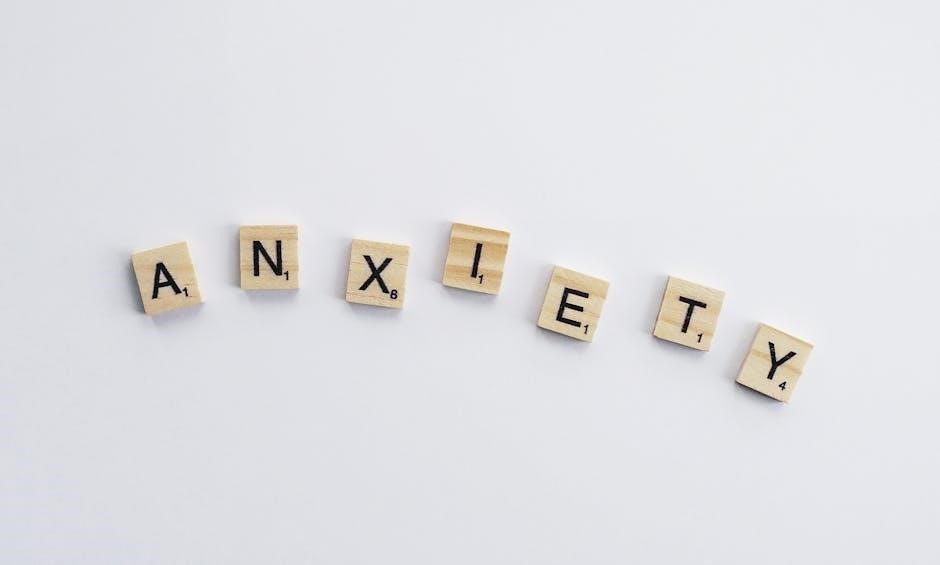Explore the benefits of 3 syllable word lists for educational purposes, offering structured learning tools for vocabulary expansion, speech therapy, and reading improvement through organized, printable PDF resources.
Overview of 3 Syllable Words
Three-syllable words are words that contain three syllables, which are units of sound in speech. These words are essential for developing phonological awareness, vocabulary, and reading skills. Examples include neighborhood, computer, and triangle. They often follow specific patterns, such as ending with common suffixes like -able or -tion, or containing vowel combinations. 3 syllable word lists, especially in PDF formats, provide organized resources for educators, speech therapists, and learners to practice and master these words effectively. Such lists are widely available online, often categorized by themes or alphabetically, making them versatile tools for educational and therapeutic purposes.
Importance of 3 Syllable Word Lists
3 syllable word lists are invaluable for enhancing language skills, particularly in vocabulary expansion, reading fluency, and speech therapy. These organized resources help learners identify and practice syllable patterns, improving phonological awareness and pronunciation. Educators and therapists use these lists to create structured lesson plans, ensuring consistent progress. The availability of printable PDFs and digital formats makes them accessible for various learning environments. By focusing on three-syllable words, individuals can build stronger foundational skills, leading to better overall communication and academic performance. These lists are essential tools for effective language development across all age groups and learning levels.

Understanding Syllables
Syllables are units of sound in words, each containing at least one vowel sound. They help in breaking down words for easier pronunciation and comprehension in language learning.
What Are Syllables?
Syllables are the building blocks of words, representing a unit of sound containing at least one vowel. Each syllable contributes to the rhythm and pronunciation of a word. For example, “computer” has three syllables (com-pu-ter), while “information” has four (in-for-ma-tion). Syllables help in breaking down words into manageable parts, making them easier to pronounce and understand. They are essential for language acquisition, reading fluency, and effective communication. By identifying syllables, learners can improve their speech and comprehension skills. Tools like dictionaries often mark syllables to aid learners in mastering word pronunciation.
How to Identify Syllables in Words
Identifying syllables involves breaking down words into their rhythmic units of sound. A syllable typically contains one vowel sound, and words can have one or more syllables. To count syllables, clap or tap out the sounds as you say the word. For example, “celebrate” has three syllables (ce-le-brate). Another method is to count the number of vowel groups, as each group usually forms a syllable. Words ending in -le, -es, or -ed often have an extra syllable. Practice with simple words like “cat” (1 syllable) or “butterfly” (3 syllables). This skill improves pronunciation and enhances language learning.
Structure of 3 Syllable Words
Three-syllable words are composed of three distinct units of sound, each containing at least one vowel. These words often follow common patterns, such as consonant-vowel-consonant-vowel-consonant-vowel (CVCVCV) or vowel-consonant-vowel-consonant-vowel-consonant (VCVCVC). Examples include “butterfly” (but-ter-fly) and “celebrate” (ce-le-brate). Many 3-syllable words incorporate prefixes or suffixes, like “unhappy” (un-hap-py), which naturally divide into syllables. The structure can vary, but each syllable typically has one vowel sound, making pronunciation easier to break down. Understanding these patterns aids in identifying and using 3-syllable words effectively in language learning and speech practice.

Benefits of 3 Syllable Word Lists
Enhances vocabulary expansion, improves reading fluency, and supports speech therapy by breaking words into manageable syllabic units for clearer pronunciation and better comprehension in learning environments.
Improving Vocabulary
Using a 3 syllable word list PDF is an effective way to enhance vocabulary by introducing learners to words with three syllables. These lists provide a structured approach to learning, helping users recognize and remember words commonly used in academic and professional settings. By practicing with these lists, individuals can expand their linguistic repertoire, gaining confidence in using complex words. The lists are particularly useful for students, educators, and language learners, offering a clear and organized method to master vocabulary. Incorporating these words into lessons or practice exercises ensures a steady progression in understanding and applying three-syllable words effectively in various contexts.
Enhancing Reading Skills
A 3 syllable word list PDF can significantly enhance reading skills by familiarizing readers with complex words. Breaking words into syllables improves fluency and comprehension, especially for challenging texts. Learners can practice recognizing syllable patterns, which boosts their ability to decode unfamiliar words. This skill is particularly beneficial for students and language learners, as it strengthens their confidence in tackling advanced vocabulary. Regular practice with these lists also enhances speed and accuracy in reading, making it easier to grasp meaning in both academic and recreational materials. Over time, this leads to improved overall reading proficiency and a more enjoyable reading experience.
Supporting Speech Therapy
3 syllable word list PDFs are invaluable tools in speech therapy, aiding individuals in improving articulation and fluency. These lists provide structured practice for patients working on pronunciation, rhythm, and intonation. By focusing on syllable division, therapists can help clients break down complex words into manageable parts, enhancing clarity and confidence. Repetitive practice with these words strengthens muscle memory and speech patterns. Additionally, the predictable structure of 3 syllable words makes them ideal for addressing specific speech challenges, such as stuttering or apraxia. Customizable lists can target particular sounds or themes, making therapy sessions more effective and tailored to individual needs. This resource is especially useful for group activities, fostering engagement and progress in a supportive environment.

Identifying 3 Syllable Words
Identifying 3 syllable words involves using phonetic rules, vowel sound counting, and syllable division techniques, with practice enhancing accuracy in recognizing these patterns effectively.
Methods for Identifying Syllables
Identifying syllables involves recognizing vowel sounds and understanding how consonants influence syllable breaks. Each syllable must have at least one vowel sound, and vowels can work alone or in groups. Consonants typically align with the nearest vowel, helping to form syllable boundaries. For example, in “beautiful,” the syllables are “beau-ti-ful,” where each vowel sound creates a new syllable. Silent vowels, like the “e” in “isle,” still count as syllables even without a sound. By applying these phonetic rules and practicing with examples, one can accurately determine syllable counts, essential for creating a reliable 3 syllable word list PDF.
Common Patterns in 3 Syllable Words
Three-syllable words often follow predictable patterns, making them easier to identify. Compound words, such as “firefly” or “toothbrush,” frequently contain three syllables. Additionally, words with prefixes or suffixes, like “butterfly” or “celebrate,” commonly fit this structure. Another pattern involves double vowels or consonants between vowels, as seen in “beautiful” or “computer.” These patterns help in recognizing three-syllable words quickly. By familiarizing oneself with these structures, compiling a 3 syllable word list PDF becomes more efficient. Understanding these patterns also aids in teaching and learning syllable recognition, making it a valuable skill for education and language development.
Examples of 3 Syllable Words
Common three-syllable words include “beautiful,” “butterfly,” “caramel,” “vacation,” and “celebrate.” Other examples are “puppy,” “kitten,” “banana,” “dancing,” and “running.” These words are often found in 3 syllable word list PDFs for educational purposes. Words like “dragonfly,” “sunshine,” and “laundry” also fit the three-syllable structure. These examples help learners understand how syllables work in different contexts. They are useful for teaching pronunciation, improving reading skills, and enhancing vocabulary. Including such words in a 3 syllable word list PDF makes learning engaging and accessible for students of all ages.

Creating a 3 Syllable Word List
Developing a 3 syllable word list involves identifying words with exactly three syllables. Use tools like dictionaries or online syllable counters for accuracy. Organize words into categories like animals, food, or actions. Ensure words are relevant and diverse. Format the list clearly, possibly with themes or visual aids, to enhance learning. Verify each word’s syllable count to maintain consistency and usability for educational purposes.
Steps to Build a Comprehensive List
To create a detailed 3 syllable word list, begin by defining the purpose and audience. Gather high-quality sources, such as dictionaries or educational websites, to ensure accuracy. Use syllable-counting tools or apps to identify words with exactly three syllables. Organize words by category, like nouns, verbs, or themes, to enhance usability. Include visual aids or examples to clarify pronunciation and meaning. Review and refine the list to eliminate errors or duplicates. Finally, format the list in a clear, readable style, such as a PDF, for easy access and sharing. This structured approach ensures a robust and practical resource for learning and teaching.
Categorizing Words by Theme
Categorizing words by theme enhances organization and usability. Grouping 3-syllable words into themes like animals, food, or emotions simplifies targeted learning. For example, under the “Nature” category, words like “butterfly” or “mountain” can be listed. This method helps learners focus on specific areas, improving retention. It also allows educators to design themed lessons, making learning engaging. By organizing words thematically, users can quickly access relevant vocabulary, making the list a valuable resource for both educational and personal use. This approach ensures the word list is not only comprehensive but also practical and user-friendly.
Ensuring Accuracy in the List
Ensuring accuracy in a 3-syllable word list is crucial for effective learning and teaching. To maintain reliability, each word should be verified for its syllable count using trusted dictionaries or linguistic resources. Breaking down words into their phonetic components or syllabic patterns can help confirm their structure. Additionally, consulting multiple sources or using online tools that provide audio pronunciations can validate syllable counts. Regularly reviewing and updating the list ensures consistency and correctness. Accuracy not only builds trust in the resource but also supports successful learning outcomes for students and educators alike. Attention to detail is key to creating a dependable 3-syllable word list.

Resources for 3 Syllable Word Lists
Access 3-syllable word lists via online marketplaces like Teachers Pay Teachers or Google search. Educational websites and PDF repositories offer free and premium resources for download.
Where to Find 3 Syllable Word Lists Online
Locating 3 syllable word lists online is straightforward. Start with a Google search using keywords like “3 syllable word list PDF” or “three syllable words for education.” Platforms like Teachers Pay Teachers and educational blogs often provide free or premium downloadable resources. Additionally, Google Drive and Dropbox links are commonly shared by educators for easy access. Websites specializing in language learning or speech therapy may also offer curated lists. For convenience, many PDFs are categorized by themes or age groups, making it easier to find the right set for your needs. Always verify the reliability of the source for accuracy.
Free vs. Premium PDF Resources
When exploring 3 syllable word list PDFs, consider free versus premium options. Free resources are ideal for basic needs, offering simple lists for personal or classroom use. They are widely available on educational websites and forums. Premium resources, however, provide enhanced features like categorized lists, interactive elements, and professionally designed layouts. These are often available on platforms like Teachers Pay Teachers or Etsy. Premium options are better suited for educators seeking comprehensive, organized materials. While free resources suffice for casual use, premium versions offer superior quality and versatility for teaching or therapeutic purposes. Choose based on your specific needs and budget.
Activities Using 3 Syllable Word Lists
Engage with 3 syllable word lists through interactive activities like word scrambles, fill-in-the-blanks, and syllable bingo. These exercises enhance vocabulary, pronunciation, and rhythm in a fun, educational way.
- Word scrambles for spelling practice.
- Fill-in-the-blank stories for context-based learning.
- Syllable bingo to identify patterns.
Individual Practice Exercises
Individual practice exercises with 3 syllable word lists are essential for developing phonological awareness and language skills. These exercises can be tailored to suit different learning levels, ensuring personalized progress. One effective activity is syllable highlighting, where learners identify and color-code syllables in words. Another is sentence creation, where students use 3-syllable words to form meaningful sentences. Reading aloud from PDF lists helps improve pronunciation and rhythm. Additionally, writing exercises, such as filling in missing syllables or categorizing words by meaning, reinforce retention. These independent tasks allow learners to work at their own pace, fostering confidence and fluency in handling multisyllabic words.
- Syllable highlighting and coloring for visual learners.
- Creating sentences using 3-syllable words for context practice.
- Reading exercises to enhance pronunciation and rhythm.
- Writing activities to reinforce syllable recognition and retention.
Group Activities and Games
Group activities and games using 3 syllable word lists are engaging ways to promote collaborative learning and teamwork. These exercises encourage active participation and make syllable practice enjoyable; A popular activity is syllable relay races, where teams take turns identifying syllables in words from the list. Another fun game is syllable charades, where participants act out 3-syllable words for their team to guess. Additionally, group sorting games involve categorizing words by themes or syllable patterns. These interactive exercises foster camaraderie and reinforce syllable recognition in a dynamic setting, making learning more enjoyable and effective for all participants.
- Syllable relay races to practice identification skills.
- Syllable charades for interactive word guessing.
- Group sorting games to categorize words by theme or pattern.
Incorporating Technology
Incorporating technology into learning with 3 syllable word lists enhances engagement and accessibility. Educational software and apps designed for syllable practice offer interactive quizzes, flashcards, and audio aids. Interactive e-books and gamified platforms allow learners to practice syllable recognition in a fun, digital environment. Additionally, online tools provide pronunciation guides and word breakdowns, making it easier to identify syllables. Many resources, such as PDFs, can be integrated into virtual classrooms or shared via learning management systems. Technology also enables personalized learning, allowing users to track progress and focus on challenging words. These tools make learning flexible and adaptable to different learning styles and preferences.
- Interactive quizzes and flashcards for practice.
- Audio aids for pronunciation and syllable breakdowns.
- Integration with virtual classrooms and LMS platforms.
Interactive Learning Apps
Interactive learning apps are powerful tools for mastering 3 syllable words. These apps often feature gamified exercises, such as word matching, syllable sorting, and audio-based quizzes. Many apps include customizable lists, allowing users to import PDFs or create their own 3 syllable word lists. Progress tracking and rewards systems motivate learners to practice regularly. Some apps also offer social features, enabling users to share achievements or compete with peers. Offline access ensures learning can happen anywhere, making these apps a versatile resource for students, educators, and speech therapists alike. They provide an engaging and modern way to improve syllable recognition and pronunciation skills.
- Customizable lists and PDF imports.
- Gamified exercises for interactive learning.
- Progress tracking and rewards systems.

Teaching Strategies
Effective teaching strategies involve breaking down 3 syllable words into manageable parts, using repetition, and incorporating visual aids. Educators can use printables or digital tools to engage students in interactive exercises, fostering better retention and understanding of syllable patterns.
- Repetition and interactive exercises.
- Visual aids for syllable breakdown.
- Digital tools for engagement.
Integrating 3 Syllable Words in the Classroom
Integrating 3 syllable words into classroom activities enhances phonological awareness and reading proficiency. Teachers can incorporate 3 syllable word lists into daily lessons through flashcards, word-building exercises, and guided reading. Interactive games, such as syllable sorting and word chaining, engage students and promote active learning. For differentiation, educators can group students by skill level, offering tailored exercises. Multisensory approaches, like writing and categorizing words, reinforce retention. Additionally, integrating technology, such as educational apps, provides interactive practice. By seamlessly weaving 3 syllable words into the curriculum, educators create a dynamic and inclusive learning environment that fosters linguistic development and confidence.
- Interactive games and group activities.
- Differentiated instruction for diverse learners.
- Multisensory approaches for deeper understanding.
Using Visual Aids for Better Learning
Visual aids are essential tools for teaching and reinforcing 3 syllable words in an engaging manner. Flashcards, charts, and posters displaying 3 syllable words can help students visually recognize patterns and syllable breaks. Infographics and mind maps can illustrate how words are structured into syllables, making complex concepts more accessible. Additionally, pairing words with images or symbols enhances memory retention, especially for visual learners. Teachers can also use color-coded highlighting to emphasize syllables in printed materials. Interactive digital tools, such as whiteboards and educational apps, offer dynamic visual learning experiences. These resources cater to diverse learning styles, fostering a more inclusive and effective classroom environment.
- Flashcards and posters for visual recognition.
- Infographics and mind maps for syllable structure.
- Color-coded materials to highlight syllables.
- Digital tools for interactive learning.
Multisensory Approaches to Syllable Practice
Multisensory approaches combine visual, auditory, and kinesthetic methods to enhance syllable practice, making learning more engaging and effective. Techniques like tapping syllables while speaking, clapping rhythms, or using hand gestures can engage students physically. Writing words and highlighting syllables with colors incorporates visual and tactile learning. Audio recordings of words broken into syllables help develop auditory awareness. These methods cater to different learning styles, ensuring that students can grasp syllable patterns through multiple pathways. Multisensory strategies are particularly beneficial for diverse learners, including those with learning challenges, as they create a rich and interactive learning environment.
- Tapping or clapping syllables for kinesthetic engagement.
- Visualizing syllables through color-coded writing.
- Audio recordings to enhance auditory recognition.
- Hand gestures to reinforce syllable structure.

Assessment and Progress Tracking
Regularly assess syllable recognition and retention using tests, quizzes, and exercises. Track progress through performance metrics, identifying strengths and areas needing improvement for tailored practice.
- Conduct periodic tests to evaluate mastery.
- Monitor accuracy in syllable identification.
- Adjust learning strategies based on progress.
Monitoring Improvement in Syllable Recognition
Monitoring progress in syllable recognition involves tracking learners’ ability to accurately identify and count syllables in words. Regular quizzes, reading exercises, and oral assessments can measure improvement. Use a 3-syllable word list PDF to systematically practice and review words, ensuring mastery over time. Record accuracy rates and observe growth in confidence and speed. Provide opportunities for self-assessment, allowing learners to identify areas where they need more practice. Celebrate incremental progress to motivate continued effort and engagement in syllable-based activities.
- Track accuracy in identifying syllables over time.
- Use the PDF list for consistent, focused practice.
- Encourage self-assessment and reflection.
- Celebrate small improvements to build confidence.
Providing Constructive Feedback
Constructive feedback is essential for helping learners improve their syllable recognition skills. When using a 3-syllable word list PDF, educators or tutors should highlight correct syllable breaks and explain common errors. Focus on specific strengths, such as accurate identification of syllables in familiar words, and gently point out areas for improvement, like over- or under-splitting syllables. Encourage learners to revisit challenging words and provide examples of correct pronunciation or segmentation. Positive reinforcement and actionable advice foster confidence and motivation, helping learners refine their skills effectively. Regular feedback sessions ensure steady progress and address misconceptions early.
- Highlight correct syllable breaks and explain errors.
- Offer specific, actionable advice for improvement.
- Combine positive reinforcement with constructive criticism.
- Use the PDF list to track and address common challenges.

Digital Tools and Apps
Popular apps like Syllable Counting Apps and EduTech Tools offer interactive exercises with 3-syllable word lists, featuring audio guides and progress tracking for effective learning.
- Interactive exercises with 3-syllable word lists.
- Audio guides for correct pronunciation.
- Progress tracking for improved learning.
Effective Apps for Syllable Practice
Several apps specialize in syllable practice, offering interactive exercises tailored for understanding and mastering 3-syllable words. Syllable Practice Pro and Read Pronounce Learn are popular choices, providing drills, audio aids, and progress tracking. These tools often include customizable lists, allowing users to import or create their own 3-syllable word lists, making them ideal for personalized learning. They also feature games and quizzes to engage users, ensuring a fun and effective learning experience. These apps are particularly useful for educators, speech therapists, and learners seeking to improve syllable recognition and pronunciation skills.
- Interactive drills for syllable recognition.
- Audio aids for correct pronunciation.
- Customizable lists for personalized learning.
- Engaging games and quizzes.
Online Games for 3 Syllable Words
Engaging online games can make learning 3-syllable words fun and interactive. Websites like Syllable Games and WordWorks offer activities such as syllable sorting, matching, and quizzes. These games often feature audio clips to aid pronunciation and timers to enhance speed. Many platforms allow customization, enabling users to upload their own 3-syllable word lists for practice. Interactive challenges, such as identifying syllables in sentences or completing word puzzles, reinforce learning. These tools are particularly effective for students and educators seeking dynamic ways to master syllable recognition and improve language skills.
- Syllable sorting and matching exercises.
- Audio aids for pronunciation guidance.
- Customizable word lists for tailored practice.
- Timed challenges to boost speed and accuracy.
Final Thoughts on 3 Syllable Word Lists

Additional Resources
Find more 3-syllable word lists and learning materials on educational websites, language apps, and teacher forums. These resources often include printable PDFs and interactive exercises.
Further Reading and Learning Materials
Explore comprehensive 3-syllable word lists in PDF format from reputable educational websites, language apps, and teacher forums. These resources often include workbooks, flashcards, and exercises designed to enhance vocabulary and reading skills. Many websites provide free downloadable PDFs, while others offer premium versions with additional features like audio pronunciation guides and interactive exercises. Teachers and learners can also find curated lists categorized by themes or difficulty levels, making it easier to tailor learning materials to specific needs. Additionally, some platforms offer printable worksheets and games that incorporate 3-syllable words, fostering engaging and effective language practice. These materials are ideal for classrooms, homeschooling, or self-study.
Leave a Reply
You must be logged in to post a comment.